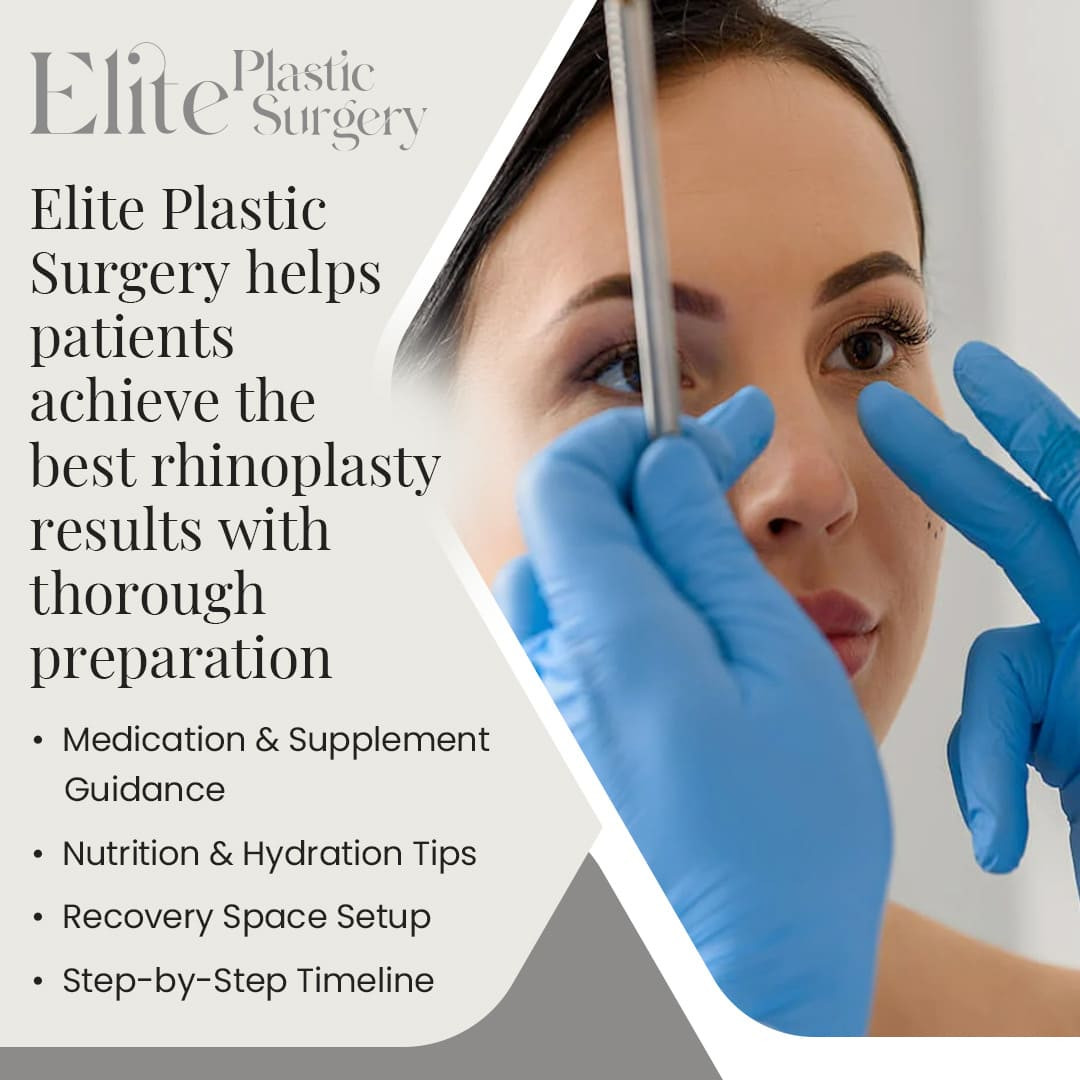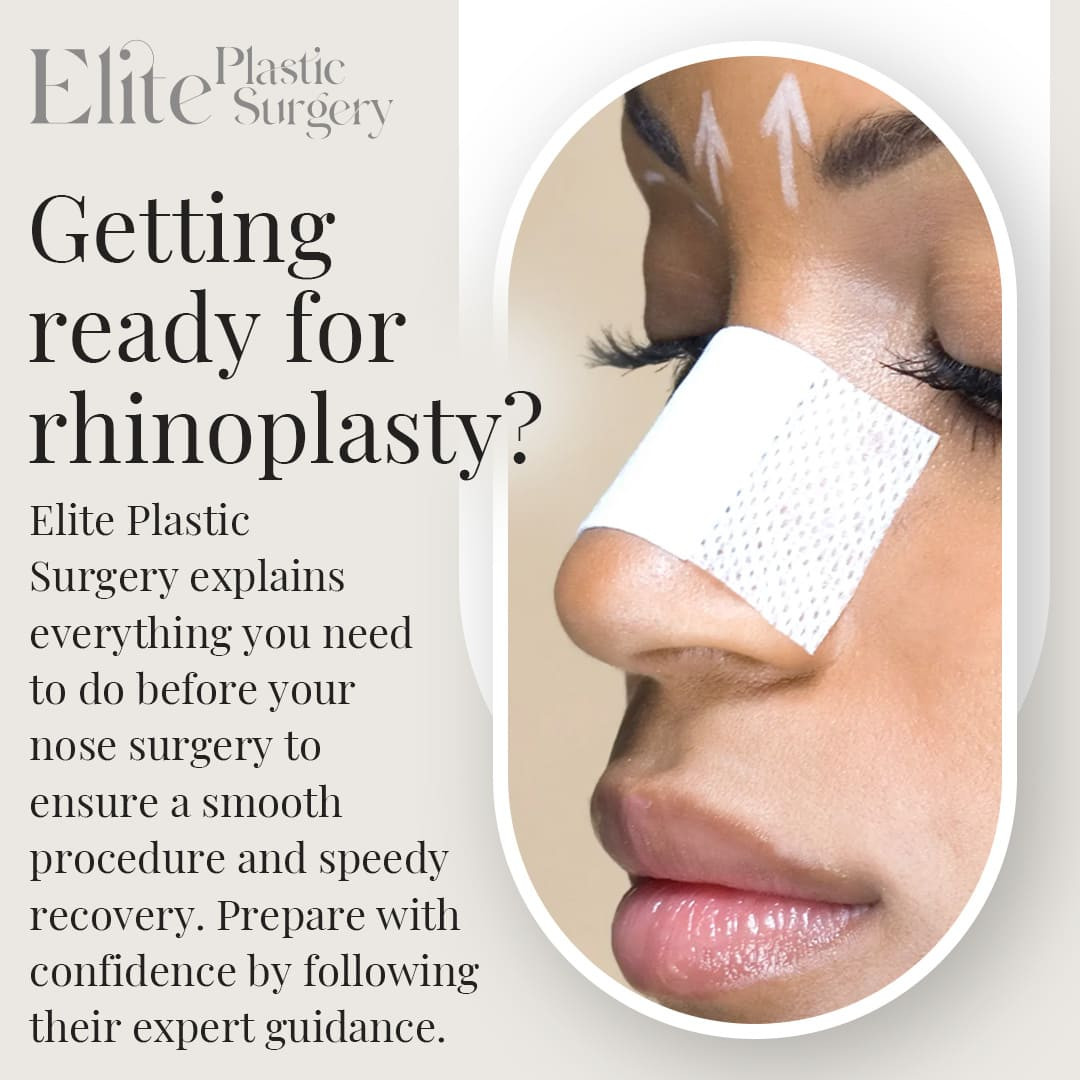Chandler, AZ - Undergoing rhinoplasty is a decision many patients consider for both cosmetic and functional reasons. Elite Plastic Surgery Chandler AZ explains how prospective patients can best prepare for rhinoplasty, helping minimize risk, optimize healing, and set realistic expectations.
Why Pre-Surgical Preparation Matters
How patients prepare before rhinoplasty surgery can influence recovery speed, complication risk, and aesthetic outcome. Studies show that the rate of major complications in rhinoplasty is low (around 0.7?% in a large data set), yet smaller risks like bleeding, infection, or swelling remain real.
A methodical preoperative routine helps reduce those risks. Elite Plastic Surgery offers a clear roadmap, from consultations to nutritional habits, for patients to follow.
Consultation and Planning: Foundations of Success
Preparation begins at the pre-operative consultation. At this stage, the clinic reviews each patient’s comprehensive medical history, medications, past surgeries, and nasal anatomy. High-resolution imaging and multiple-view photographs document the “before” baseline for post-operative comparison.
Surgeons explain whether an open or closed approach, or even revision or ethnic rhinoplasty, best fits anatomical and aesthetic goals. Based on that discussion, patients receive a tailored instruction set including which medications and supplements to discontinue, dietary modifications, and behavioral guidelines.
What to Halt Before Your Procedure
Certain medications and supplements interfere with clotting or anesthesia and must typically be stopped at least two weeks before surgery:
Nonsteroidal anti-inflammatory drugs (NSAIDs) such as ibuprofen, naproxen, aspirin
Herbal supplements or high-dose vitamins that affect clotting (e.g. vitamin E, fish oil, ginseng, garlic, ginkgo)
Alcohol should be avoided, as it can impair healing
Nicotine in any form must be discontinued immediately. It constricts blood vessels and significantly raises the risk of poor wound healing, skin necrosis, and delayed recovery
However, essential prescription medications, such as those for hypertension, diabetes, thyroid, or cardiac health, are typically continued under physician guidance.
Organize Your Recovery Environment
Return home to a space optimized for comfort and healing. Key items to gather in advance include:
Cold compresses or gel packs (wrapped to avoid direct contact)
Extra pillows to maintain head elevation
Saline nasal spray, gentle ointments, or petroleum jelly
Soft, non-lotion facial tissues
Easy access to fluids, medications, light foods, a thermometer, and a table beside the bed
Button-up or loose clothing (to avoid pulling garments over the head)
A restful, elevated sleeping arrangement and an accessible side table make the recovery period smoother.
Nutrition, Hydration, and Lifestyle Adjustments
In the two to three weeks before rhinoplasty surgery, patients benefit from focusing on foundational health factors:
Protein intake: lean meats, eggs, yogurt, legumes to support tissue repair
Vitamins C and zinc: citrus fruits, bell peppers, and nuts help collagen formation and immune function
Hydration: aim for 8–10 glasses of water daily to support circulation and metabolic balance
Avoid excess sodium, processed foods, added sugars, and heavy meals that increase inflammation
Sleep: commit to 7–9 hours nightly — quality rest bolsters recovery
Skin care: maintain a gentle, fragrance-free regimen; suspend retinoids, harsh peels, tanning, or facials one week prior
These adjustments help reduce inflammation, support immunity, and stabilize the body ahead of surgery.
Final Week, Night Before, and Day-Of Instructions
As surgery approaches, patients should finalize logistics:
Timeframe | Key Actions |
One week before | Fill prescriptions, freeze soft meals, confirm transportation and 24-hour caregiver |
Three days before | Reconfirm schedule, ensure clothing ready (button-up shirts), set recovery space, stop remaining supplements |
Night before | Shower with antibacterial soap, remove all cosmetics and products, lay out clothing, fast after midnight |
Morning of surgery | Take only permitted maintenance medications with a sip of water, arrive on time without jewelry, IDs, or valuables |
On the day, patients check in at the surgical facility, sign consent forms, meet the anesthesia team, and review surgical plans one final time.
What to Expect When Recovery Begins
Rhinoplasty is typically an outpatient procedure. After a short recovery period, patients return home with nasal splints or light packing. Bruising and swelling peak around day 3 and diminish over weeks. Residual swelling, especially in the nasal tip, may take up to a year to fully resolve.
Patients are encouraged to view rhinoplasty before and after galleries and gradual healing updates as reference points for expectation management.
Cost Considerations
The cost of rhinoplasty depends on factors such as the surgical technique (open vs closed), anesthesia, facility fees, and the surgeon's experience. Transparent conversations in consultation help patients understand cost breakdowns and value beyond price alone.
Because rhinoplasty may be combined with septoplasty or other procedures, patients should compare composite pricing and understand how individual elements contribute to the total.
Prepare Confidently for Rhinoplasty Surgery in Chandler with Elite Plastic Surgery
Ready to take the next step toward your ideal profile? Schedule your consultation with Elite Plastic Surgery to plan your rhinoplasty surgery. Their board-certified surgeons provide expert guidance, customized plans, and exceptional results that align with your aesthetic goals. Call (480) 291-6895 or email [email protected] now to book your appointment.




